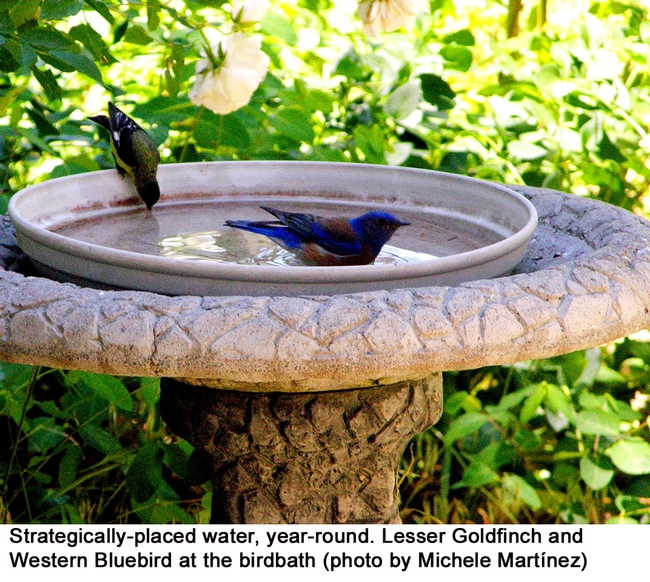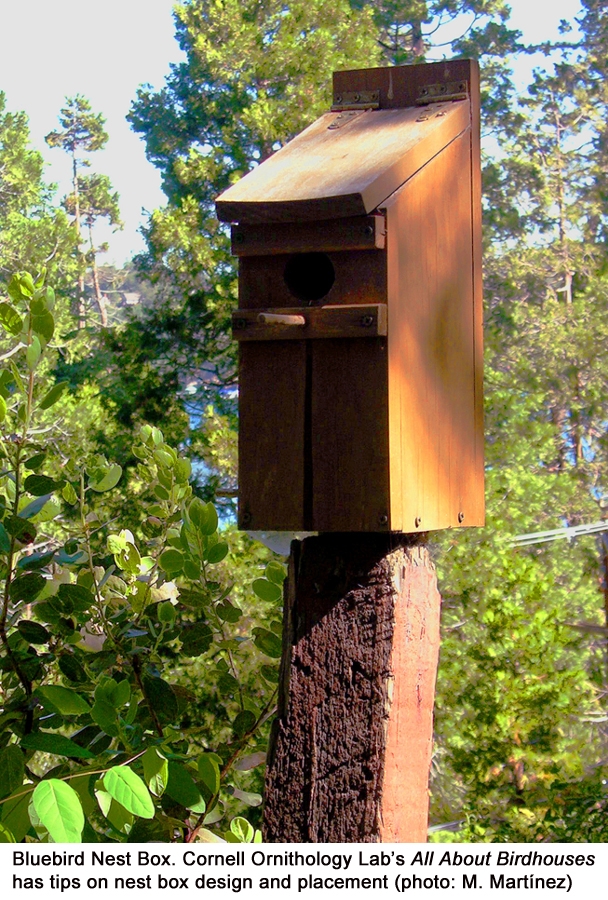Whether we live in the city, the suburbs or wild areas, people who tend plants are not just gardeners, but builders of ecosystems. In 2014, the Audubon Society initiated the Habitat Heroes project to assist gardeners and community groups in the work of caring for songbirds. Devised as a response to diminishing habitats across the U.S., the project addresses the effects of rapid development of our wildlands. Great swaths of the country once occupied by woodland, wetlands, and desert habitat are being overtaken by urban sprawl. Today, an estimated twenty million acres of North America is carpeted with turf lawns. If we were to picture this through the eyes of migrating birds, we'd see patchworks of rooftops and lawns where we once found natural rest stops. For the myriad species that cross the continent each year, seasonal habitats are essential to life. San Bernardino County is host to dozens of species of migrating birds, from swallows and bluebirds, to warblers and hummingbirds. Some travel hundreds of miles to reach our back yards. Through years of drought, we've learned much about the benefits of cutting back lawns for water conservation. Now the Audubon Society asks that we also think of yard care in the service of wild birds. Through Habitat Heroes, Audubon offers simple, yet effective tips on how even small gardens can become living habitats. The project begins with basic facts about food and shelter, and includes steps we can take to protect wildlife across our communities.
Critter Conscious Plant-scapes
Our trees are the foundation of the backyard food chain. They are home to insect life, the most essential food source for songbirds. In Bringing Nature Home, Etymologist Doug Tallamy of the University of Delaware describes the nesting 

Read More:
“How to Create a Bird Friendly Yard,” by Rene Ebersole, Audubon Magazine (online):
http://www.audubon.org/magazine/july-august-2013/how-create-bird-friendly-yard
“Bringing Nature Home (web resource),” by Doug Tallamy
http://www.bringingnaturehome.net/gardening-for-life.html
Landscape Guide for Mountain Homes, LASCD. – An excellent handbook on drought-friendly landscaping for all of San Bernardino County, with native plant selections for both high-altitudes and lower elevations.
http://www.wrightwoodfsc.com/documents/landscape.guide.mountain.homes.pdf
Cornel Laboratory of Ornithology (Web Resource) – With information on birdhouses, migrating birds, and more.
http://www.birds.cornell.edu/Page.aspx?pid=1478